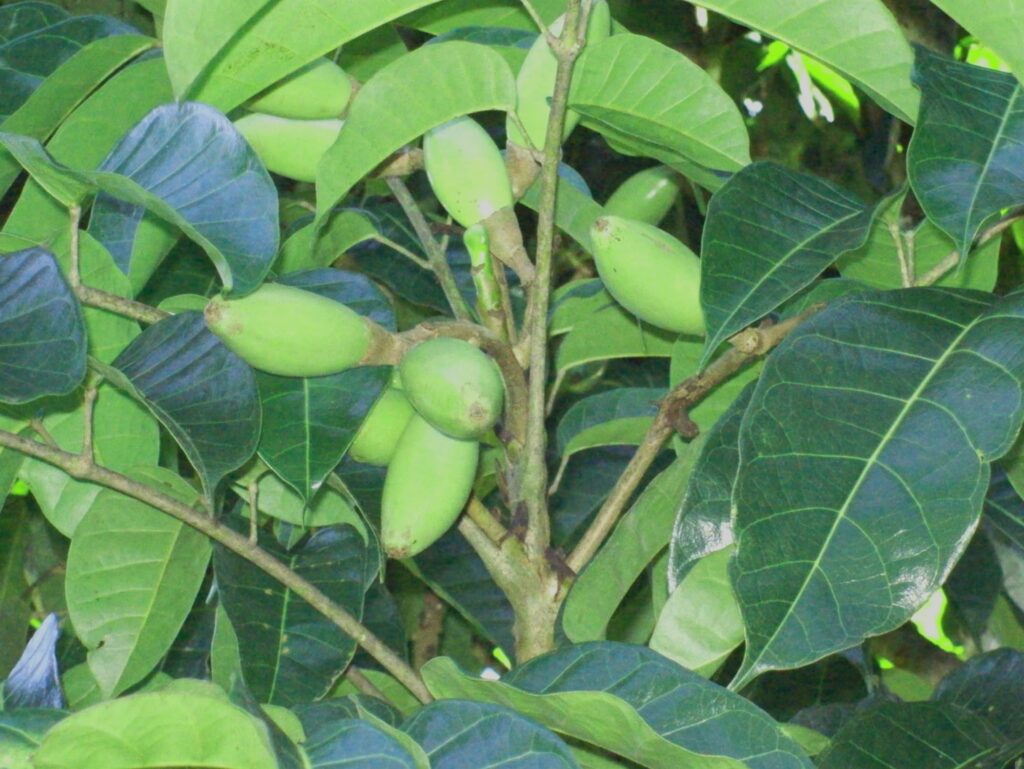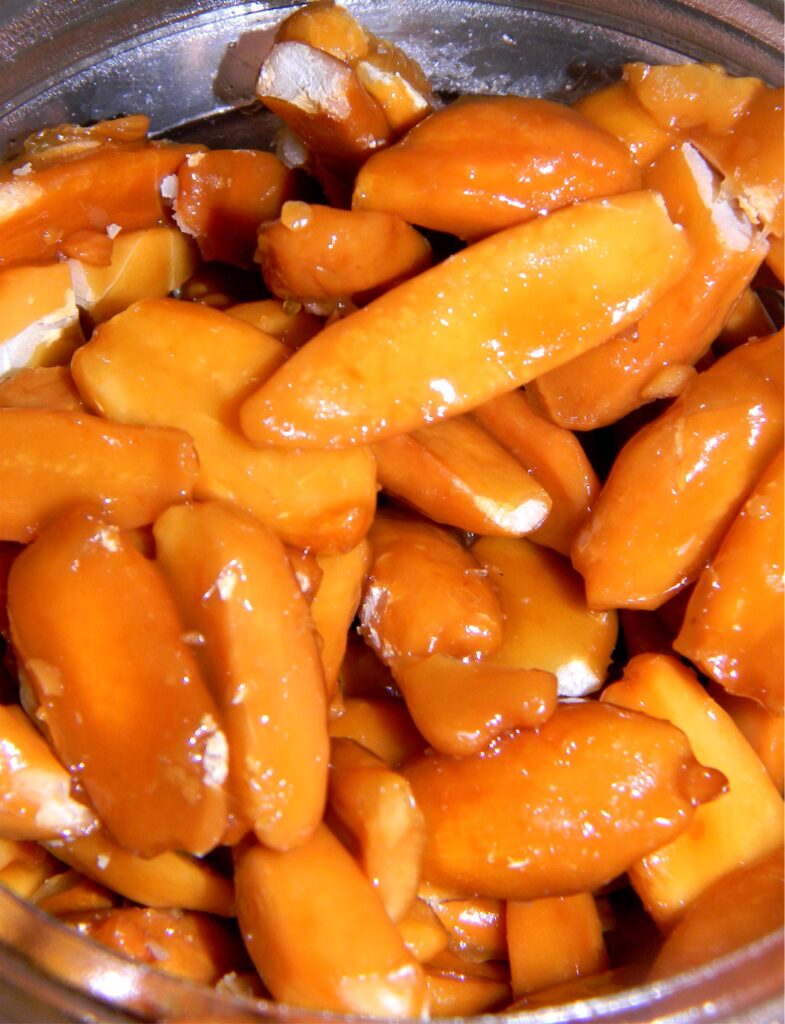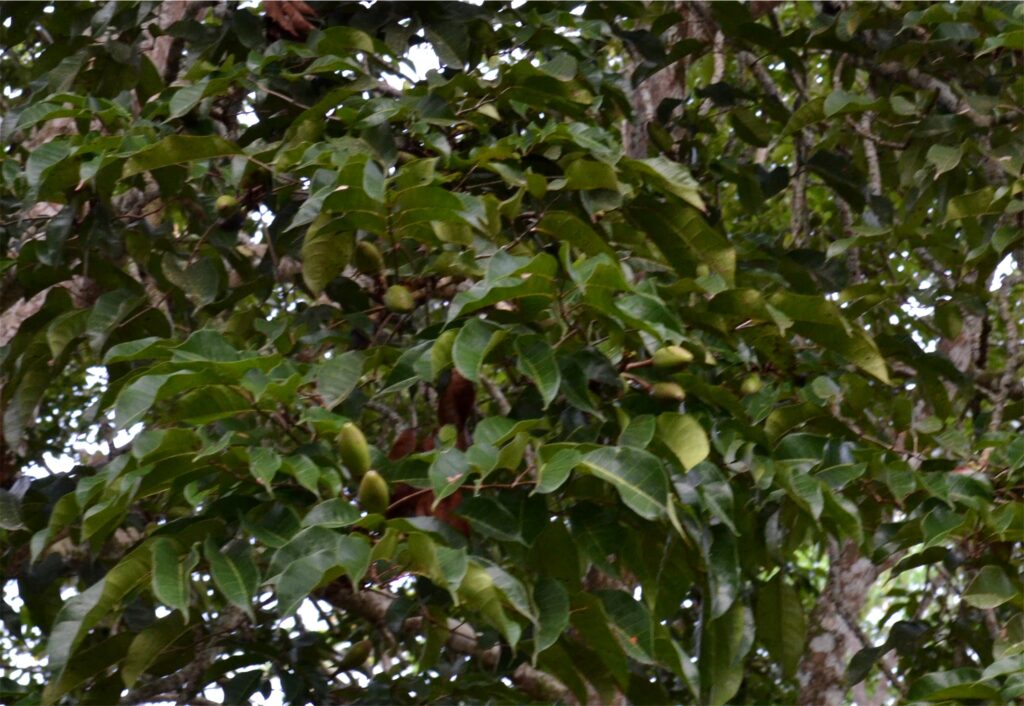Text and Photos by Henrylito D. Tacio
If there’s another tree in the Philippines that should be named as a national symbol, it should be pili nut. If waling-waling – a native of the Mount Apo forests – has been elevated as the country’s second flower icon (after sampaguita), pili nut should get the distinction, too.
After all, half of the Pilipinas is “pili.” Besides, pili nut (scientific name: Canarium ovatum) is native to the Philippines. Although it is grown heavily in Bicol, pili can be grown anywhere in the country. However, they abound most in Southern Tagalog, Western Visayas, Eastern Visayas, Southern Mindanao, and Caraga.
“Pili nut is one economically important tree that deserves attention not only from the government officials but also from farmers,” says Jethro P. Adang, the director of the Davao-based Mindanao Baptist Rural Life Center (MBRLC) Foundation, Inc. “Although it is native to our country, there is still no commercial planting of the crop.”
In some Asian countries, pili nuts are also grown but mostly as ornamental. Despite the fact that it has no pili nuts plantation to speak of, the Philippines is the only country that produces and processes pili nuts commercially. “As such, pili nut has the possibility of becoming a major dollar earner and source of income for our farmers,” Alimoane points out.
“Pili nuts possess the characteristics to become among our country’s most valuable export commodities. Categorically, they can compete with cashew, almond, and macadamia in terms of texture, taste, and extracted micronutrient yield,” said a study conducted by a team of biotechnologists, who urged the current administration to support the pili industry.

Pili nuts (up close) 
Edible pili nuts 
Pili nuts
In 1977, the country reportedly exported some 3.8 tons of pili preparation to Guam and Australia. Before World War II, pili nuts were exported to Hawaii, Germany, France, Great Britain, and Japan, according to the Plant Industry Digest published in 1970.
Today, however, the largest buyers of pili nuts are in Hong Kong and Taiwan, where the kernel is used as one of the major ingredients in one type of the famous Chinese festive desserts known as the “moon cake.”
“The current status of the pili is equivalent to that of the macadamia some 30 years ago,” says Richard A. Hamilton, a macadamia breeder at the University of Hawaii at Manoa. “It has great potential to develop into a major industry.” (The expensive macadamia nuts are in demand in Korea, Hong Kong, Singapore, and Austria.)
Pili trees are attractive symmetrically shaped evergreens, averaging 20 meters tall with resinous wood and resistance to strong wind. It prefers deep, fertile, well-drained soil, warm temperatures, and well-distributed rainfall.
The immediate concern in pili production is the difficulty of propagation. Refrigeration of seeds at 4°C to 13°C resulted in loss of viability after five days. Seed germination is highly recalcitrant, reduced from 98-19 percent after 12 weeks of storage at room temperature; seeds stored for more than 137 days do not germinate.
According to experts, asexual propagations using marcotting, budding, and grafting are too inconsistent to be used in commercial production. Young shoots of pili were believed to have functional internal phloems, which rendered bark ringing ineffective as a way of building up carbohydrate levels in the wood.
There are three pili cultivars grown in the Philippines: “katutubo,” “mayon,” and “oas.” Most of the production in the Philippines is from trees that developed from seedlings and are highly variable in kernel qualities and production. Harvesting is from May to October, peaking in June to August, and requires several pickings.
Most pili kernels tend to stick to the shell when fresh but come off easily after being dried to 3-5 percent moisture. Properly dried shelled nuts can be stored in the shade for one year without deterioration of quality.
The kernel is the most important product from pili. When raw, it resembles the flavor of roasted pumpkin seed; when roasted, its mild, nutty flavor and tender-crispy texture are superior to that of the almond. In the early days, emulsion from crushed kernels was used by the natives as a substitute for infant’s milk.
Nutritionists claim the kernel is high in calcium, phosphorus, and potassium. In addition, pili nut is rich in fats and protein. Scientists from the University of Guelph in Canada reported that proteins in pili are as important as the proteins found in commercially important oilseeds.
“I love its tender-crisp texture, the smooth exterior, the subtle sweet flavor,” commented one consumer. “It has the highest oil content among all edible nuts and that’s what probably accounts for the soft yet crunchy feel.”
The young shoots and the fruit pulp are also edible. The shoots are used in salads, and the pulp is eaten after it is boiled and seasoned. When boiled, the pili pulp resembles sweet potato in texture but oily (about 12%). It is considered to have a food value similar to avocado.
Among the entire world’s nut, pili reigns supreme in oil content – over 70 percent. The pulp oil – highly prized for its lanolin content – can be extracted and used for cooking or as a substitute for cottonseed oil in the manufacture of soap and edible products.
“Chemical and nutritional analyses of pili pulp oil are very similar to olive oil,” the Department of Science and Technology reported. “However, pili pulp oil has more beta-carotene, a known vitamin A source, and carotenoids, which makes it more nutritious than olive oil.”
It’s no wonder why in Bicol and other parts of the country, the pili pulp oil is used in treating skin diseases such as scabies and de-worming capability for livestock such as pigs and chicken.
There are several other uses. The stony shells are excellent as fuel or as a porous, inert growth medium for orchids and anthurium. The sap of the trunk is a valued ingredient for perfume-making, and the wood itself, after the fruit-bearing life of the tree, is good for making furniture.
Growing pili nut is economically feasible. A three hundred hectare pili farm with 60,000 sixty thousand pili trees was established in Negros Occidental by the ECJ and Sons Agricultural Enterprises. They started planting seedlings in 1992. By 1996, they realized that almost half of the population they planted were male. In the same year, they started grafting the male trees with scions from trees selected from the 20 or so thousand trees that were already producing fruits. Since then, the company has been processing pili into several products and also selling raw nuts to processors.

